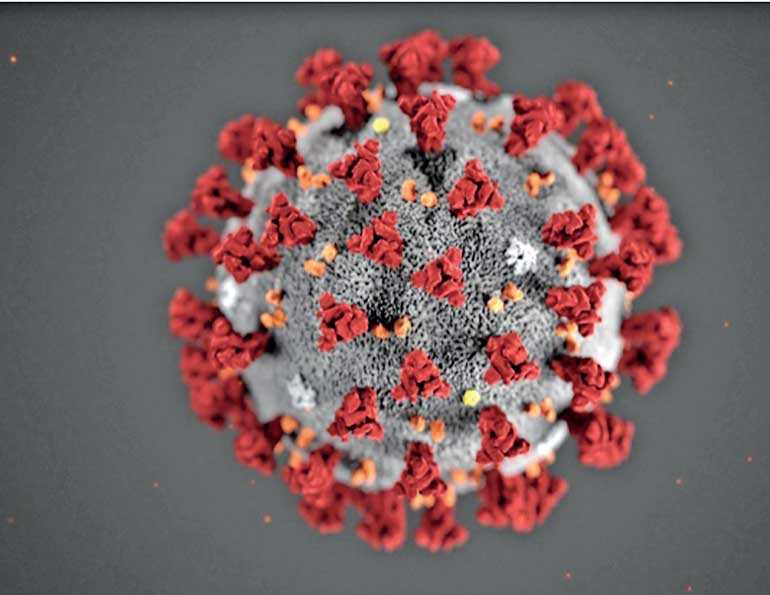Sunday Mar 09, 2025
Sunday Mar 09, 2025
Thursday, 6 February 2020 00:00 - - {{hitsCtrl.values.hits}}

The new coronavirus has tipped the scale of discussion to an emerging global pandemic and a consequent economic meltdown as well. Along with lives, economies across the world too are likely to tumble and we are also facing this unenviable possibility
Coronomics is about the economic fallout with the coronavirus or that is what my intention was when coining the word.
The new coronavirus has tipped the scale of discussion to an emerging global pandemic and a consequent economic meltdown as well. Along with lives, economies across the world too are likely to tumble and we are also facing this unenviable possibility.
When the world becomes so connected and with many depending on few and with points of production shifting for economies of scale, disruptions in long supply chains demonstrate in turn the fragility too.
People have worked on the agility over distances but many have not factored in the fragility or assumed that one can power oneself above that weakness. Probably quite a few are waking up today to discover that they have placed most of their eggs only in few baskets and annual or quarterly growth numbers can get hit quickly as a result. The very economics – linear economics by the way – then may create series of domino effects, which would be quite difficult to digest. 
A virus of around 110 nm in diameter – about 700 times thinner than the thickness of your hair! – today is taking many a country by storm and has showing the capability to take economies to ransom.
It is on record that Chinese President Xi Jinping – a Chemical Engineer by training – has asked the establishment to be ready and be prepared for Black Swan events – events that are quite rare and unexpected but with potential to cripple the system – but even with such foresight it appears that the local authorities in Wuhan had been caught napping a bit.
To their credit the Chinese scientists quickly placed the gene sequence of the novel virus on the web, followed steps of the risk management plan though may have been unpalatable to many, thus getting a number of organisations to engage in vaccine and anti-viral drug development and by this time some are apparently already getting trials organised to test the candidate vaccines. Science and technology is the only hope for the economists!
A global emergency
WHO has declared a global emergency due to the rapidly-spreading influenza, which has been brought in by a newly-emerged coronavirus. The epicentre for this outbreak is identified to be in Wuhan city – hence the name given Wuhan fever – in the Hubei province of China. A city and a province may be, but in this most populous country in the world we are talking about 59 million people in this particular region.
The world has periodically witnessed similar events though the severity has been decreasing all the time thanks to science and technology. In 1918 when the Spanish flu took hold the event was to cause deaths of 50 million people across Europe. This was just after World War 1, which also has taken 30 million lives. Eighty million lives lost in the space of five years.
After the Spanish flu perhaps the best known was the SARS episode. SARS too originated from China. Subsequently to SARS, MERS happened and world also witnessed bird-flu virus and the swine-flu virus events. SARS infected 8,000 people out of which 800 lost their lives. MERS had much worse casualty figures though it did not spread as much as SARS.
The latter two did not impact like SARS. As we read this now the current infected figure stands around 20,000 with 400 reported dead. The issue is still in its exponential growth phase and that is worrying. However, there is much more confidence today in tackling these situations and the measures necessary is neither monetary nor fiscal!
It must be indicated it was a Sri Lankan, Prof. Malik Peiris who was responsible for the determination of SARS virus in 2003. As he was based in Hong Kong, he tackled the emerging issue with dedication to emerge victorious against the virus.
In 2018 he was named as one of the top 10 science stars in Eastern Asia. It has been acknowledged that he has supported Sri Lanka subsequently to develop facilities and up the skill base. Sri Lanka today has the ability to identify a novel coronavirus infection in two hours and in the region this facility exist only in Pune for the entire India considering all its well-developed medical infrastructure.
Understand our fragility
However, we must still understand our fragility. When we celebrated 72 years of independence and when we witness whatever is passing by it is obvious we are celebrating a lot of ‘Made in Elsewhere’ almost all the time. When this situation is the norm across most of the economic sectors there is no resilience.
That was also shown when the price of masks skyrocketed when few cashed in on the opportunity. Even a mask had to be from somewhere and we just may forget that one size does not fit all! Even for production the basic materials still were coming from China. Disrupted supply chains means we are up in the creek!
However, what the virus showcased is, due to China becoming the factory of the world, lots of economies are going to get hurt in some way. Due to manufacturing being present in China, once the situation comes under control, China will rebound quite faster while the economies that are dependent may not find the rebound to be quite that easy.
Some who may solely rely on tourist arrivals for their cash flow – China today provides the biggest outbound tourist numbers to the world in addition to being the biggest spender as well! – would have suffered quite a few non-reversible setbacks during this period.
Our economy has only few eggs and most of them are in one basket and the situation thus is quite dicey. If rains comes by on time we can get 2-3% GDP without much of an effort. If the tourists do not come by, eight people are affected per each tourist that has not set foot in the country. The ‘woes factor’ dominates more than the ‘wow factors’ with us.
It is quite likely considering our warmer climes, the novel coronavirus would not impact us directly through patient numbers with one taking suitable measures. One should not forget that each flu season in USA might account for 5-10,000 deaths on average, an event that does not evoke any discussion. However, novelty of the coronavirus though belonging to the same flu virus family and its behaviour of course warrants this alertness and measures.
We just do not use much flu-shots in Sri Lanka and Peyawa and Samahan is what we are more used to and those appear to serve us well. There is a need for better scientific understanding and discourse for sure though to ensure a society that is driven logically rather than through fear and emotions.
Our behaviour unfortunately is far from rational and virus indeed is having an impact via that route in our country. Media has to be much more positive and informative as future increasingly is going to be witnessing many more of this type of situations.
China, the factory to the world
When SARS took place in 2003 growth in China was affected – then China’s contribution to the global GDP had been 4% but today the value stands at 16% - but rebounded once the situation became normal. Currently the thinking is that this episode may go on up to April this year.
There was an old statement that when the US sneezes, the rest of the world catches a cold.
Today the sentence is more apt with the Wuhan virus! The sneeze from there is felt a long way away! With China having placed 60 million in locked-down mode, a region with 4.5% contribution to the Chinese economy, the world appears to have no choice but to catch the fever!
Over the years China has assumed the mantle of factory to the world.
Interesting an observation that can be made is that this global factory is producing from the most useful to perhaps the most useless!
As an example of the latter, China produces 90% of the plastic flowers to the world. It is also China that produces 80% of the critical pharmaceutical ingredients to make all the medicines too. Wuhan itself hosts the world’s largest production facility for fibre optics – Yanglze Optical Fibre and Cable.
Wuhan is also the home to China’s steel industry.
If ever there is a country that has managed to latch into global supply chains, China stands out today as that one country that had beaten all. However, going beyond just connecting to value chains, China appears to have virtually created almost all the supply chains from within to the outside!
So when a ground zero for an unknown emerges from within, the ripples are felt in all corners. It sure suggests pushing for the understanding of the power of distributed production than simply pushing for the most scale possible for the best economics and then plan logistics!
Placing the eggs in a number of places surely offer better insurance to ensure some offspring to support the future. That is a simple lesson that nature offers us and is certainly worth revisiting.
Discover Kapruka, the leading online shopping platform in Sri Lanka, where you can conveniently send Gifts and Flowers to your loved ones for any event including Valentine ’s Day. Explore a wide range of popular Shopping Categories on Kapruka, including Toys, Groceries, Electronics, Birthday Cakes, Fruits, Chocolates, Flower Bouquets, Clothing, Watches, Lingerie, Gift Sets and Jewellery. Also if you’re interested in selling with Kapruka, Partner Central by Kapruka is the best solution to start with. Moreover, through Kapruka Global Shop, you can also enjoy the convenience of purchasing products from renowned platforms like Amazon and eBay and have them delivered to Sri Lanka.
Discover Kapruka, the leading online shopping platform in Sri Lanka, where you can conveniently send Gifts and Flowers to your loved ones for any event including Valentine ’s Day. Explore a wide range of popular Shopping Categories on Kapruka, including Toys, Groceries, Electronics, Birthday Cakes, Fruits, Chocolates, Flower Bouquets, Clothing, Watches, Lingerie, Gift Sets and Jewellery. Also if you’re interested in selling with Kapruka, Partner Central by Kapruka is the best solution to start with. Moreover, through Kapruka Global Shop, you can also enjoy the convenience of purchasing products from renowned platforms like Amazon and eBay and have them delivered to Sri Lanka.